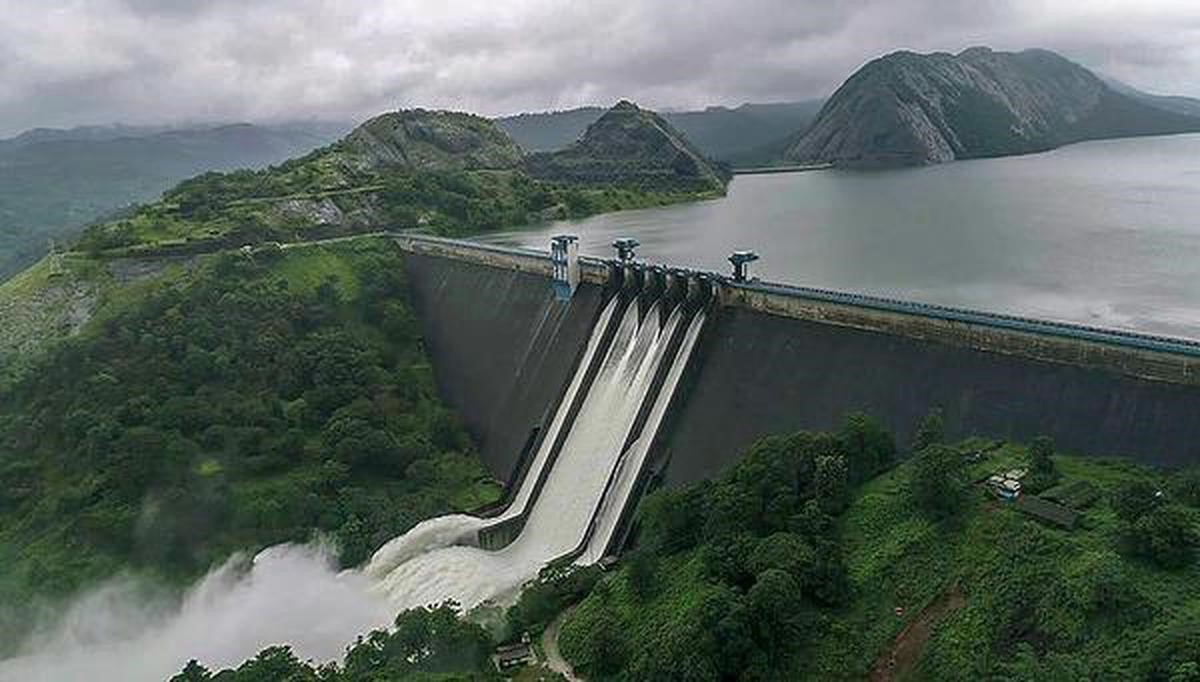
Dam Safety Act of India

23.10.2023
Dam Safety Act of India , Daily Current Affairs , RACE IAS : Best IAS Coaching in Lucknow
|
For Prelims: important point,Dam Safety Act 2021,Important facts related to dams in India For mains GS paper 2: Objectives of Dam Safety Act 2021,Challenges in dam safety,Initiatives regarding dam safety |
Why in the news?
On October 4 this year, a glacial lake outburst flood (GLOF) in South Lhonak Lake in North Sikkim washed away the Teesta III Dam, one of India's largest hydroelectric projects.
important point:
- As a response to the lack of monitoring and maintenance due to dam failure-related disasters, the Dam Safety Act was introduced in the Rajya Sabha in December 2021.
- There are about 6,000 large dams in India and about 80% of them are more than 25 years old and pose safety risks.
- These are dams with height more than 15 m or height between 10 m-15 m with certain design and structural conditions.
About Dam Safety Act 2021:
- This Act provides for monitoring, inspection, operation and maintenance of all specified dams across the country.
- The Act listed key responsibilities and mandated that national and state-level bodies be established for implementation.
- A National Committee on Dam Safety will monitor dam safety policies and regulations.
- A National Dam Safety Authority will be entrusted with the responsibility of implementation and resolution of state-level disputes.
- The Chairman of the Central Water Commission (CWC) will lead the dam safety protocols at the national level.
- The provisions require states to classify dams based on hazard risk, conduct regular inspections, create emergency action plans, establish emergency flood warning systems, and conduct safety reviews and term risk assessment studies.
- Risk profiling and regular assessments are also mandated by the Act.
- A State Committee on Dam Safety (SCDS) and State Dam Safety Organization (SDSO) will be established.
- Sikkim constituted a SCDS on August 17 with nine members and experts in hydrology and dam design.
Objectives of Dam Safety Act 2021:
- The objective of this Act is to prevent disasters related to dam failure and to provide institutional mechanisms to ensure their safe functioning.
Responsibility:
- Dam owners will be responsible for the safe construction, operation, maintenance and supervision of the dam.
- They have to provide a Dam Safety Unit in each dam which will inspect the dams:
- before and after the monsoon season, and
- During and after every earthquake, flood, disaster, or any sign of crisis.
- Functions of dam owners: Prepare an emergency action plan, conduct risk assessment studies at specified regular intervals, prepare a comprehensive dam safety assessment through a panel of experts.
Provision of punishment:
- Failure to comply with any provision of the Act is punishable with imprisonment and/or fine.
- If such obstruction or refusal to comply with directions results in loss or imminent danger of life, the entity shall be punished with imprisonment which may extend to two years.
- In February 2023, the Sikkim High Court ordered Gati Hydropower Project Company to pay ₹70 lakh to two widowed mothers for non-compliance with the Dam Safety Act.
What are the challenges in dam safety?
- States were asked to report and record incidents of dam failures.
- Until now, no statutory provision required systemic reporting of failures and no single agency was tasked with tracking this data.
- Records are maintained by the CWC, but the list is not updated regularly.
- DSA does not promote risk-based decision making and fails to encourage transparency.
- Periodic reviews are often not conducted or if conducted, their findings are not readily available in the public domain.
- The Act requires dam builders to conduct comprehensive dam safety assessments, but there is no standardization of how failure is analyzed and reported.
- A strong DSA should allow various stakeholders to easily access information, but India's framework is small.
- Dam safety is a public purpose function.
- Everything about dam safety, the work of all institutions and committees and authorities, their reports, decision minutes and agendas, everything should be immediately available to the public.
Dam Safety Measures:
- Dam safety is a function of several parts: designing and constructing dams that adhere to safety margins, maintaining and operating them according to guidelines, recording data in real time in an accessible format, predicting hazardous events, and emergency planning.
- Periodic reviews are expected to yield fresh flood maps and new rule curves (which determine the capacity of dam reservoirs), all of which contribute to the protection of downstream areas.
Initiatives regarding dam safety:
Dam Rehabilitation and Improvement Project (DRIP):
- After the completion of the DRIP Phase-I scheme, the Government of India has launched the DRIP Phase-II and III scheme envisaging rehabilitation and safety improvement of 736 dams located in 19 states.
- The scheme is of 10 years duration, being implemented in two phases, each phase being of 6 years duration with an overlap of 2 years.
- The second phase of DRIP has been declared effective in October 2021 by the World Bank, and is being co-financed by the World Bank and the Asian Infrastructure and Investment Bank.
- The State/Agency-wise number of dams proposed under this scheme and the estimated cost is given at Annexure.
Important facts related to dams in India:
- The oldest dam in India: The oldest dam in India is Kallanai Dam, which is in Tamil Nadu. It is built on the Kaveri River and is about 2000 years old.
- India's Longest Dam: Hirakud Dam is built on Mahanadi in Odisha.
- India's Highest Dam: Tehri Dam in Uttarakhand is built on the Bhagirathi River.
Source: The hindu